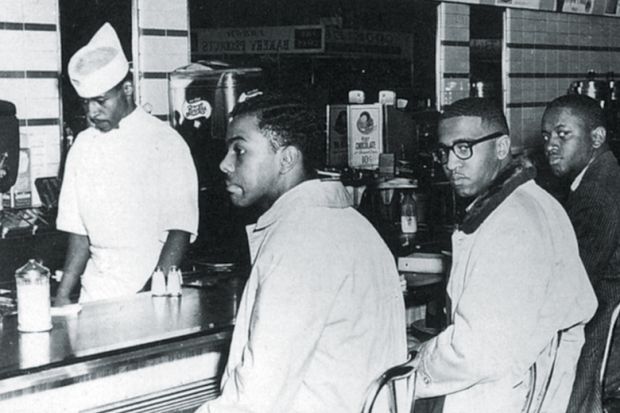The concept of “endurance” has two distinct meanings. To endure, in a transitive sense, means tolerating or putting up with someone or something. Intransitively, it involves simply existing or surviving – that is, the sheer persistence of a body over time. While Lara Shalson’s modelling of performance embraces both senses, she demonstrates that endurance and temporal duration are by no means synonymous, as is so often assumed in discussions of performance art. A performance of endurance may take place over a relatively long period: think of Tehching Hsieh and Linda Montano’s Art/Life One Year Performance 1983‑1984, during which they were tied together by an eight-foot rope for an entire year, with an agreement never to touch each other. Likewise, it may not. Here, think of Chris Burden’s art action Shoot (1971), which was seemingly over in a blink.
Shalson proposes that endurance is a form of performance in which a participant physically commits to, and then sees through, a plan leading to outcomes that cannot be fully determined in advance. In the case of Shoot, Burden asked a friend to shoot him in such a way that the bullet would graze the skin of his arm. The plan also included the witnessing of this act by a small invited audience as well as its documentation. What could not be foreseen was precisely how the shooter would behave, where the bullet would go, how the audience would respond (and perhaps intervene) or the quality of the documentary evidence. Shoot exemplifies how performances of endurance are both done and undergone. Unlike conceptual art, they must extend beyond potential into the material, consequential effects of wilful engagement in a specific action or set of actions. They are lived through. Shalson’s theorisation of endurance, and its delineation as performance structure, is taut and precise, enabling generative readings of performance events as ambivalent, discomforting and yet deeply ethical in the way that they force artists and spectators alike to negotiate interpersonal relations and politically charged power structures.
Most of the performances that Shalson discusses are canonical, or “paradigmatic”, art events. She cites a friend who described Marina Abramović’s Seven Easy Pieces (2005) as the kind of image that burns, collectively, into our retinas. To a large extent, this is because these works tend to circulate through iconographic photographs that distil an experience (or, more accurately, a range of simultaneous experiences) into a singular image. These performances endure through and as documentation. But the one that resonated most with me, at this historical moment, was neither conceived nor framed as art.
It is represented by a photo of four black men sitting at a “whites only” lunch counter in Greensboro, North Carolina, in 1960. Their performance of endurance was to remain and return there, day after day, ignoring racist abuse with dignity until either served or forcibly ejected. Building on an analysis of Yoko Ono’s Cut Piece (1964) and Abramović’s Rhythm 0 (1974), Shalson explains how, by embodying a plan, these protesters demanded recognition as authorial subjects through performances that made evident the limits of individual control. Overall, her argument is elegant and far-reaching, although it would have perhaps been enriched if these sit‑ins had more explicitly informed her readings of performance art in subsequent chapters.
Roberta Mock is professor of performance studies at the University of Plymouth and chair of the Theatre and Performance Research Association (TaPRA).
Performing Endurance: Art and Politics since 1960
By Lara Shalson
Cambridge University Press
224pp, £75.00
ISBN 9781108426459
Published 18 October 2018
Register to continue
Why register?
- Registration is free and only takes a moment
- Once registered, you can read 3 articles a month
- Sign up for our newsletter
Subscribe
Or subscribe for unlimited access to:
- Unlimited access to news, views, insights & reviews
- Digital editions
- Digital access to THE’s university and college rankings analysis
Already registered or a current subscriber? Login






